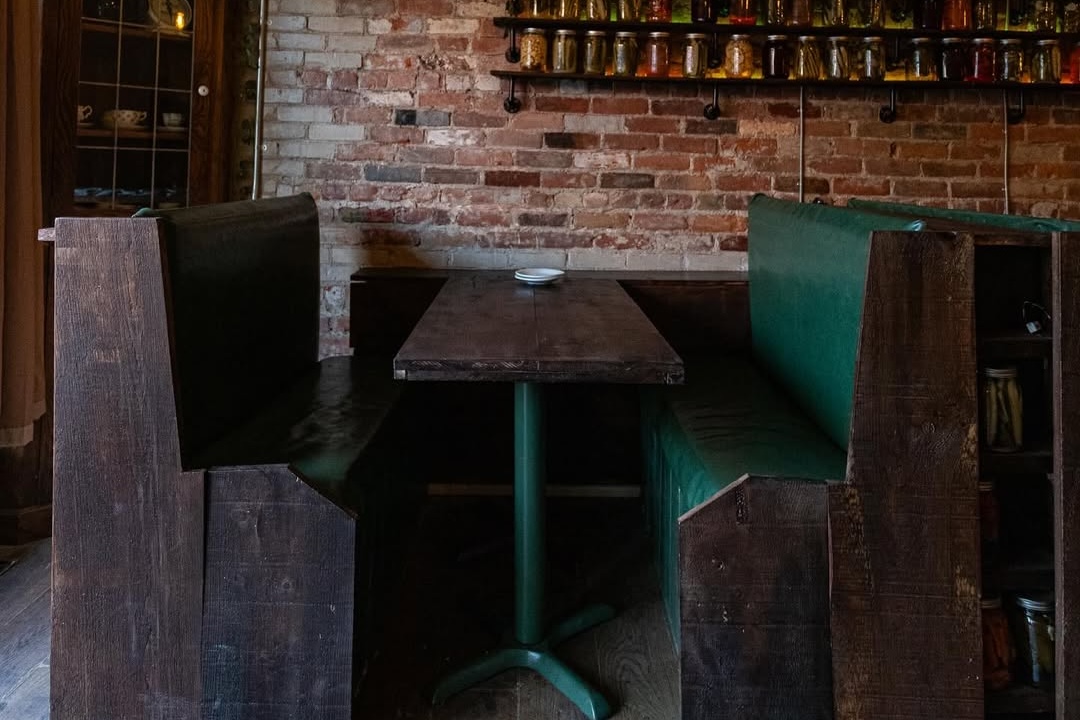With a largely uncurated lineup of over 100 shows, it’s virtually impossible to sum up an event as diverse and expansive as the annual Toronto Fringe Festival. That said, if there’s one notable 2025 trend, it’s that the festival will feature more clowns than you can fit into a very small car.
This isn’t entirely new. Fringe festivals have frequently provided a carnivalesque atmosphere appropriate for clowns, and the Canadian fringe circuit has a rich tradition of beloved recurring clown acts — such as Mump & Smoot, Karen Hines’ Pochsy, and Morro & Jasp. And yet, we appear to be finding ourselves in the midst of a local clown renaissance, one marked by Pochsy’s recent comeback, as well as the recent flourishing of clown-comedy hub Sweet Action Theatre.
Some of the most talked-about shows from last year’s Toronto Fringe featured clowns, and many have kept up the momentum after the festival’s end: Colonial Circus just received Montreal Fringe’s 2025 Frankie Award for outstanding clown show; Rat Academy has spawned a sequel; and fan favourite MONKS was not only named best new Canadian work at the Toronto Theatre Critics’ Awards, but has had two Toronto remounts and is continuing onward to other monasteries.
When I say clown, I don’t necessarily mean facepaint or big floppy shoes. It’s a rich and multifaceted tradition of performance, often difficult to define in broad strokes, but typically grounded in caricatured personas, spontaneity, and (of course) plenty of comedy.
Either way, it’s an exciting time to be a Canadian clown (or clown enthusiast). To get a taste of the clown offerings that’ll be taking over this year’s festival, Intermission sat down with the creators of three shows to hear their mostly serious thoughts about this whimsical art form.
The immodestly named #1 Clown Comedy with Victor and Priscilla is a somewhat unique entry in a genre dominated by writer-performers, given that it’s created by a team of three playwrights, none of whom appear onstage. Aaliya Alibhai, Natalie Kaye, and Nina Kaye have co-written a new script to be performed by Julie Vanderlip and Eric Amaral as the titular duo, joined onstage by Michelle Gram and Parker-Elizabeth Rodenburg in supporting roles.
“The thing I love about this show is that there’s everything in it,” said Nina Kaye. “[Historical inaccuracies], gender swapping, Victoriana, clown, Oscar Wilde, Marx Brothers, you name it.” In the same Zoom conversation, Alibhai added that the show “explores what it means to be a gentleman or a lady in society,” with all of the class and gender implications those terms carry.
Part of the advantage of a writer-led project is the team’s heavy engagement with language, particularly Polari, a form of theatrical slang that allowed queer people in the Victorian era to communicate with one another under the radar. “We did a lot of research, went through a lot of old books and glossaries, trying to pick that apart,” noted Alibhai. “Seeing the way that history and culture is captured through language gave the play its soul.”
Nina Kaye describes Polari as an “anti-language,” because “it was meant to not be understood by those not in the know.” She likens the play to A Clockwork Orange, featuring “characters who you can’t really understand, but who teach you a language as they bring you into the world.”
Intrigued by the title, I cheekily asked the writing team how they had the audacity to proclaim their clown show number one, given how many there are in the festival. Ever the comedienne, Natalie Kaye quipped that “it’s an aspirational title, like dressing for the job you want.”
If nothing else, this numeration managed to make Victor and Priscilla first in the Fringe’s alphabetical show listings, and they’re followed closely by Shanice Stanislaus and Rachel Resnik’s clown piece $$$ (Money Money Money). An international collaboration — Stanislaus lives in Singapore, Resnik in New York, and it’s directed by English clown Petra Massey from the company Spymonkey — the show depicts the performer-creators’ real-time effort to finance their “very real” upcoming Netflix series by soliciting $200 million from the Fringe audience. And that’s no joke, so make sure to bring a few loonies.
“We will tell you the truth about the [artistic] money trail,” explained Resnik. “Where does the money go? Where does it come from? What’s the money pipeline in theatre? Where does your money go when you donate to a GoFundMe [or] you give an artist a dollar on the street? It goes somewhere, but you don’t know where it’s going. We will tell you.”

The pair met shortly before the pandemic while studying clown at the esteemed École Philippe Gaulier in France. Stanislaus recalls that “Rachel told me that I was very funny” immediately upon their first encounter, though Resnik playfully disputes the historicity of that compliment. “She keeps telling interviewers this, but I don’t remember,” Resnik told me, laughingly attempting to set the record straight.
Even if Resnik doesn’t remember saying it, she won’t deny thinking it. “Gaulier at the time was a lot of men,” noted Resnik. “We were doing bouffon [a style of clown pioneered by French actor-teacher Jacques Lecoq], which is so hard, and she [Stanislaus] was kicking these guys asses in these exercises. And she had no idea that she was fucking hilarious.”
Longtime Toronto Fringe patrons might recall Resnik’s In Denial: A One Woman Clown Show in 2014, as well as Stanislaus’ Patron’s Pick-winning Mail Ordered from 2023. DNA from both of these pieces can be found in $$$, which continues In Denial’s examination of what it takes to make a career in showbiz, and Mail Ordered’s themes of money, labour, and exploitation. Soon after $$$ had its modest premiere at a bar in Brooklyn, they were invited to showcase it at the 2024 New York Comedy Festival. When we spoke, they were just about to head to Las Vegas, where Massey has a residency, to workshop the show before bringing it to Toronto.
When $$$ was in New York, one performance became an especially stark illustration of “what happens when you put a bunch of money in the room,” said Resnik: “A wildcard audience member” tried to steal everything they’d collected during the show, and was only thwarted when other spectators “threatened to beat this guy up.”
“You open up the door, and anything can happen,” mused Stanislaus. “I think that’s the magic of clown.”
While Victor and Priscilla and $$$ are geared toward adult audiences, clown can often be a great way of introducing children to theatre. At the End of Kaliyuga, written and performed by Sanskruti Marathe, treats young audiences to a blend of clown and classical South Asian dance (though it’s separate from the Fringe’s KidsFest programming).
Another Gaulier alum, Marathe developed the piece in Toronto via Theatre Direct’s Forward March Festival and Tarragon Theatre’s Sally Stavro Family Series, and then took it to the 2024 Edinburgh Fringe.
Inspired by Hindu mythology, the show follows three gods — Brahma the Creator, Vishnu the Preserver, and Shiva the Destroyer — contemplating what to do about the impending end of the world. It contains an interactive component where “you get to decide the fate of this planet,” explained Marathe.
“I think it’s very interesting to ask those big questions to children,” she continued, “because they’re not as jaded, and they’re very open to innovative ideas to resolve the big issues.” During the show, Marathe directly asks the kids in the audience about the earthly things they’d like to protect and destroy. When it comes to destruction, she’s been heartened to receive answers like “climate change, pollution, [and] bullies.” Later in the show, she asks them for creative solutions; one of her favourite responses has been a proposition to build “a bubble-gum time machine that flies and doesn’t require a lot of fuel.”
For Marathe, telling this potentially epic story through the medium of clown felt like a natural fit. “These gods are flawed and they have their dark sides,” she noted, “but they’re also very naïve and childlike. I realized how inherently clownesque that was.”
Of the three shows I’ve been profiling, Kaliyuga happens to be the only one to feature the medium’s iconic red nose. “I feel like the red nose is just an invitation for the audience to let go,” Marathe observed. “Whatever your perception or your understanding of gods, or of anxieties around the end of the world, you can leave them behind. Because you can see this red nose, so obviously it’s going to be funny.”

When I asked my six interviewees what clown meant to each of them, I was struck by the weightiness of their answers. They talked about social change, political satire, and humour as a gentle means of undercutting the status quo. Marathe, commenting on the stifling rigidity of her own classical training, celebrated how “clown was this opportunity to break out of my own head, and my understanding of… what art is. It’s allowing [yourself] to fail; it’s giving yourself complete permission to be as stupid, ridiculous, and cringy as possible.”
With far too many clown shows to spotlight — to say nothing of all the sketch comedy, puppets, and drag — this year’s Fringe promises to be a rollicking good time. “Clown is, in its essence, very rebellious. And Fringe, in its essence, is very rebellious,” says Marathe. “This is a place to take up space, to take up the agency of your work. I feel like that is the foundational need of every clown.”
The 2025 Toronto Fringe Festival runs from July 2 to 13. Tickets are available here.
Toronto Fringe is an Intermission partner. Learn more about Intermission’s partnership model here.


















